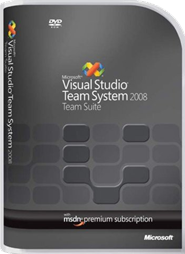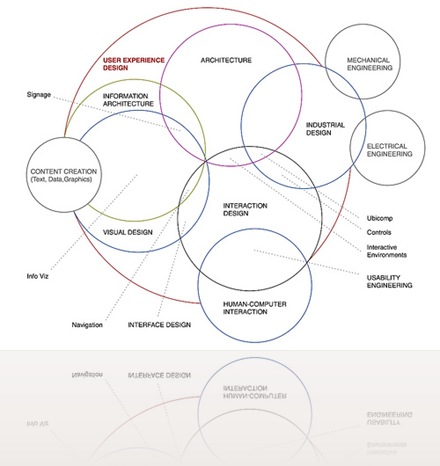Secure Coding 101
February 10, 2010 Category: Blog 3 Comments »
This post is the 5th in a series that started with the 10 practices that every developer needs to start right now
 When writing software, we often don’t think about the security implications of our actions. Probably because we write software to do something, we’re not always aware of what it shouldn’t do. Their are a lot of guidelines for writing secure code, and designing secure systems. Rather than going in to all of the areas, let me just hit on some of the especially important topics that I’ve come across…
When writing software, we often don’t think about the security implications of our actions. Probably because we write software to do something, we’re not always aware of what it shouldn’t do. Their are a lot of guidelines for writing secure code, and designing secure systems. Rather than going in to all of the areas, let me just hit on some of the especially important topics that I’ve come across…
SOLID: Software that works.
February 9, 2010 Category: Blog 5 Comments »
This post is a part of a series that I started with “10 Practices that Every Developer Needs to Start Right Now“.
Update: This post was picked up by DZone, go vote it up!
Ok, before you dig in to the post, let’s get two things out of the way first. 1.Go read the authority on SOLID principles from the man himself, Uncle Bob Martin. 2nd.Go get the very cool Inspirational SOLID images from the guys over at Los Techies. They released them under a Creative Commons License which I think is pretty cool! Alright, got that out of the way? Good. Let’s get started.
Few things have come a long OO history that resonate so well with so many developers than the SOLID principle. One of the reasons they resonate with so many developers is because they communicate several practices that many developers have been doing all along. The beauty and power of the SOLID principals in in there ability to communicate, what I call code architecture, in such a memorable and practical way.
Like any good thing, however, taken to an extreme can become a hindrance on any project. So, I’m going to tackle these principals like I tackle everything in this series… give you my take on it. So here you go: SOLID according to Caleb.
Learning to Write (Software)
January 25, 2010 Category: Blog 4 Comments »
I received a message on Facebook last week from a friend of mine that asked this question:
I have recently decided that I would love to go to school to learn programming. I just wanted to know if you had any advice or suggestions that could help me out (I know it’s a very open ended question)? Also I wanted to know if you had any suggestions on books to read regarding Design Patterns (particularly related to web development).
Great question. Let’s tackle those starting with the second part…
Practices: Object Oriented Development
January 17, 2010 Category: Blog 11 Comments »
I’m starting off this series talking about Object Oriented Programming. It’s amazing how many people write C# or VB (.NET) with long, procedural methods with really no understanding of the true fundamentals of OO design.
I know, I know – it’s not you, and know what? I’m not talking about you.. but check out the code from the person next to you. See what I mean?
Just because you’re writing in an OO language, doesn’t mean that you’re writing OO code, or taking advantage of the Object Oriented benefits. An Object Oriented language is more than classes with methods, properties and events (even VB 6 had that!).
Learn the Fundamentals.
Introduction – 10 Development Practices
January 16, 2010 Category: Blog 3 Comments »
If you are going to read through my “10 practices that every developer should start right now” series, then you probably want to know where these 10 practices came from, why I chose these 10 – really, what so important about secure coding anyway? 😉 – I think that it’s important to know that these aren’t just 10 random items to fill a couple of blog posts. These are all practices that have been thoroughly thought out. This list is something that I started to formulate over a year ago based on my experience as a consultant, working as a technical editor, and discussions with countless MVPs, other consultants and in my interviews with potential consultants… Read the rest of this entry »
10 practices that every developer needs to start right now
January 6, 2010 Category: Blog 8 Comments »
Update: Since technically a DI Container could be considered part of SOLID, I’ve swapped it out for Secure Coding… more on this soon!
If I ever right a book on becoming a .NET Ninja, these are the things that I want to cover.
Introduction
OO
SOLID
Use a Container (DI)
Secure Coding 101
Patterns
Automated Tests
Source Control
Continuous Integration
Agile | Lean | Scrum | XP
Team Dynamics
Never Stop Learning
Eventually, I’d like to write a book and dedicate at least a chapter to each of these (although any one of these topics could be a book in and of itself) In the mean time, I think that I’ll start with a blog post on each one, and maybe make it a goal to eventually do a User Group talk covering each topic? I’m looking forward to flushing these out as posts. I hope that you will enjoy them too!
What sort of things would you add to the list?
5 Steps to becoming a Silverlight Expert
July 4, 2009 Category: Blog 5 Comments »
Recently I noticed something interesting on google searches and especially on bing. If you search for “Silverlight Expert” I show up near the top! Well… when google thinks that you are a Silverlight expert, then it’s time to start blogging more I guess. So here are my top 5 steps to becoming a Silverlight Expert. These are some of the most valuable steps that I’ve used as an Expert Silverlight Consultant and Trainer. We try to introduce as many of these resources in our Training and Consulting.
5. UX Skillzes
Sorry for the haxx0r lingo… but I’ve been liking it a lot lately. So, what are UX Skills? In short, this has nothing to do with Silverlight. Silverlight (or Flash, or WPF) are technologies that make it easier to create a better User Experience. At the end of the day though, it is the developer / designer that has the responsibility of creating the experience. the platform just makes it easier to realize that designers vision. No tool can completely make up for a lack of skill.
User Experience (UX) is made up of multiple areas and disciplines. Including concepts like Information Architecture (IA), Interaction Design (ID), Visual Design, Human-Computer Interaction studies, Human Interaction Psychology, etc…
Silverlight Databinding: Acme Insurance Demo
January 19, 2009 Category: Blog 1 Comment »
Get Fit in February Contest – Win Visual Studio Team Suite MSDN Subscription!
January 9, 2009 Category: Blog
I just posted this on my new health blog. I’m re-posting it here because there is a definite overlap to this contest between getting healthy and the developers audience here.
Wednesday night I spoke at the North Dallas .NET User Group where I announced this for the first time publically… unless you count twitter (some good twitter feed back as well)
So Here’s the deal…. if you’ve seen my new health blog you’ll know that I’ve been having a lot a success lately getting back in shape with an eating plan. I feel great and I’d like to keep the momentum going and help “spread the love”. Too many developers are out of shape (including me).
 To help keep this going I’m going to run a contest on my health blog in February: I don’t have all of the details worked out yet, but I do know that I’m going to give out a free subscription to MSDN Team Suit to the winner (approx $10,000 retail value!).
To help keep this going I’m going to run a contest on my health blog in February: I don’t have all of the details worked out yet, but I do know that I’m going to give out a free subscription to MSDN Team Suit to the winner (approx $10,000 retail value!).
so, tune in, subscribe, or follow me on twitter and look for the final details to get announced here on my health blog before February. Also, if you have any suggestions on how we could do this fairly and accurately on line, leave a comment over there!
(I turned off comments on this post… so that they could go over here.)
Dependency Injection with Silverlight
December 18, 2008 Category: Blog 2 Comments »
This is one of my favorite talks that I’ve been doing lately. I like the concepts here because they don’t just apply to Silverlight applications, but all of your software development. I also like that fact that most people don’t think about some of the more advanced software approaches that you can take with Silverlight.
Download my demo code from SkyDrive.
Enjoy!







